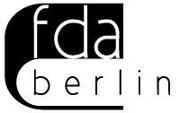2 Hausarbeiten mit je 10 Seiten !!!
Empirische Daten analysieren/schätzen. Durchführung einer empirischen Studie
The Economics of Air Transportation: Theory and Quantitative Analyses
(Die Ökonomie des Luftverkehrs: Theorie und quantitative Analysen)
Seminar Content/ Inhalt:
1) This course covers the economics of air transport (airports, airlines and air traffic controls) and the quantitative practices used in the industry.
Dieser Kurs umfasst die Wirtschaftlichkeit des Luftverkehrs (Flughäfen, Fluggesellschaften und Flugverkehrskontrollen) und die quantitativen Praktiken, die in der Industrie verwendet werden.
2) The study of production and cost function lays the basis for answering practical policy questions including governance structure and competition in the industry.
Das Studium der Produktions- und Kostenfunktion legt die Grundlage für die Beantwortung praktischer politischer Fragen wie Governance-Struktur und Wettbewerb in der Branche.
3) An extensive literature review serves as background for understanding the main policy issues of the air transport industry( like horizontal and vertical organization of the industry, the organization of the value chain of airlines, airports, and ATC, and the role of governments in the industry.
Eine umfassende Literaturrecherche dient als Hintergrund für das Verständnis der wichtigsten politischen Fragen der Luftverkehrsbranche (wie die horizontale und vertikale Organisation der Industrie, die Organisation der Wertschöpfungskette von Fluggesellschaften, Flughäfen und ATC, und die Rolle der Regierungen in der Industrie.
4) A special focus will then be given to airports, where an already existing database will be updated and used in various policy oriented case studies.
Ein besonderer Fokus wird dann auf Flughäfen gelegt, wo eine bereits vorhandene Datenbank in verschiedenen politikorientierten Fallstudien aktualisiert und genutzt wird.
Learning Outcomes
In this seminar, the students will
-understand the economics of airports, airlines and ATC
-be able to work with a database including financial, traffic and technical variables estimate cost and/or production functions of airports as a basis for policy discussion
-estimate demand functions for air transport and generate pricing policies
-analyze the difficulties regional airports face with regard to scale and cost disadvantages
-understand the role of non-aviation services at main airports
-write a term paper on a policy issue with quantitative applications based on a key publication.
The Economics of Air Transportation: Theory and Quantitative Analyses
Statistical Computing (Am besten mit Eviews!!!!!)
I Programming in languages for statistical computing (Eviews,
Matlab, R, STATA, GAUSS, SPSS and GeoDa)
I All programs are installed in the PC-Pool (R and GeoDa are free)
I Learn to write procedures, handle libraries, do graphics
I Acquire skills to program methods not found in standard
econometrics packages
I Should also be able to use scripts written by others
I You will have to write some programs as homework
I There will be 1 graded computing assignment
Scientific Computing Resources I R. The Comprehensive R Archive Network
http://cran.r-project.org/
. An Introduction to R
http://cran.r-project.org/doc/manuals/R-intro.pdf
. Rmetrics: R libraries for financial market analysis and valuation
of financial instruments.
http://www.rmetrics.org/
I GeoDa: http://geodacenter.asu.edu/
How to conduct an empirical study
I Overview of the subject, read the literature
I Get familiar with the economic theory and estimation methods
I Obtain data and check data quality
I Implement estimation method
I Evaluate and organize results
I Write the paper
Databases
I Depends on the considered topic! Some data already
available!
I Eurostat: http://europa.eu.int/comm/eurostat/
. Economic, Demographic, and Social Data for single countries,
EU 15, EU 25
I National Statistical Offices
. Statistisches Bundesamt :
http://www.eds-destatis/index.php
. links to international databases
I European Central Bank:
http://www.ecb.int/stats/html/index.en.html
. EU Monetary, Financial and some Macro Data
Databases II
I Deutsche Bundesbank:
http://www.bundesbank/statistik/statistik.en.php
. German Monetary, Financial, Macroeconomic, and some
Business Data
I Federal Reserve Economic Data :
http://research.stlouisfed.org/fred2/
. (FRED II) maintained by FRB of St. Louis
. U.S. Monetary, Financial/Business, and Macroeconomic Data
I FEDC - Federal Reserve Board:
http://www.federalreserve.gov/releases/
. Some U.S. Monetary and Financial Data
. there is a rich set of databases available (access?)
. see the webpage for more information
Databases III
I SFB 649
I EcoWin
. you should use it to get data for your empirical study (access?)
. see the webpage for more information
I DIW - SOEP These data is a available for the course
I Institut für Arbeitsmarkt- und Berufsforschung -
IAB-Betriebspanel (????)
Databases IV
I ”Zentrum für Umfragen, Methoden und Analysen” - ZUMA
I Finance (http://de.finance./)
I FreeLunch (Free economic, financial, and demographic
data provided by Economy***Kontaktdetails werden automatisch entfernt***)
I TAQ - Data (financial market data, e.g. order book
data, intraday data etc.)
Databases IV
I Survey of Professional Forecasters: Quarterly survey of
macroeconomic forecasts in the United States given by the
Federal Reserve Bank of Philadelphia
I Thomson Reuters provides Datastream for macroeconomic
variables and financial market data.
I CONSENSUS FORECASTS - G7 & Western Europe by
Consensus Economics Inc.
I Federal Reserve Bank of St Louis
I Financial Data Finder provided by the Fisher College of
Business at the Ohio State University
Content of an empirical research paper
I Popular approach IMRAD
. Introduction
. Methods
. Results
. Discussion
Content of an empirical research paper II
1. Title Page
2. Introduction/Motivation (What problem was studied?)
3. Theory/Models/Methods (How was the problem studied?)
4. Data and descriptive statistics
5. Empirical results (What are the findings?) and discussion
(What do the findings mean?)
6. Conclusions
7. References/Literature
Title page
I Title
I Authors
I Affiliations
I Date
I Abstract
I Key Words
I JEL classification (Journal of Economic Literature
Classification System, http://www.aeaweb.org/index.html)
I Contact Info
Abstract
Search databases typically contain only abstracts. It is vital to
write a complete but concise (150 words) description of your work
to entice potential readers. First impressions count in research too.
I Motivation: Why do we care?
I Problem statement: What problem are you trying to solve?
What is the scope of your work?
I Approach: How did you go about solving or making progress
on the problem?
I Results: What’s the answer?
I Conclusions: What are the implications of your answer?
Introduction
I What is the subject of the study
I What do we already know about the subject (literature
review)
I What is the innovation of the study
I What is the purpose of the study (working hypothesis)
I Outline of the paper
Methods
I How was the data analyzed
I Present underlying economic model/theory
I Present econometric/statistical estimation method
I Allows reader to judge validity of the study and its findings
Data
I Describe data and its quality
I How was the data sample selected
I Descriptive statistics such as
. time period
. number of observations, data frequency
. mean, median
. min, max, standard deviation
. skewness, kurtosis, Jarque–Bera statistic
. time series plots, histogram
I Allows reader to judge whether sample is biased or to evaluate
possible impacts of outliers, for example
Results
I Organize material and present results
I Use tables, figures (but prefer visual presentation)
I Tables, figures should supplement (and not duplicate) the text
I Discuss results
. Do the results support or do they contradict economic theory
. Compare to previous research
Conclusion
I Summary of what has been done and what has been found
I Draw conclusions about the problem studied
I Limitations of study (assist reader in judging validity of
findings)
I Suggest avenues for future research
References
I List papers referenced in the study (not all the papers you
ever read in your life)
I Who, What, Where, When
I example: Litterman, R. and J. Scheinkman (1991), ‘Common
Factors Affecting Bond Returns’, Journal of Fixed Income,Vol.1 (June), 54 – 61.I in the text: Litterman & Scheinkman (1991) or (Litterman &Scheinkman, 1991)
1. Fragestellung; Economics benefits of air transport in Turkey to the occupyancy
Ökonomische Vorteile der Flughäfen unter Betrachtung der Belegung
2.Fragestellung: Cost of airport delay in Turkey
- Kostenfrei für Auftraggeber
- Nur verifizierte Auftragnehmer
- Support bei Missverständnissen
- Kostenfreie Plagiatsprüfung
- Bewerte deinen Auftragnehmer
- Online fixierte Absprachen
Inserat melden
Gebote


 German
German
 English | Writeree.com
English | Writeree.com


